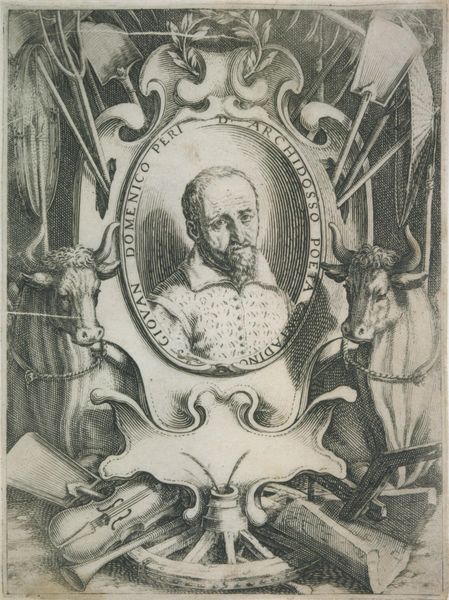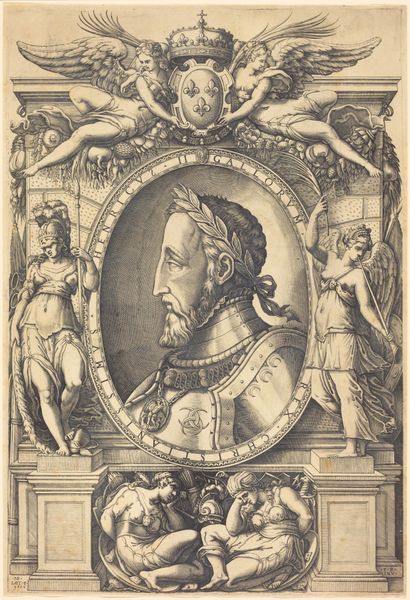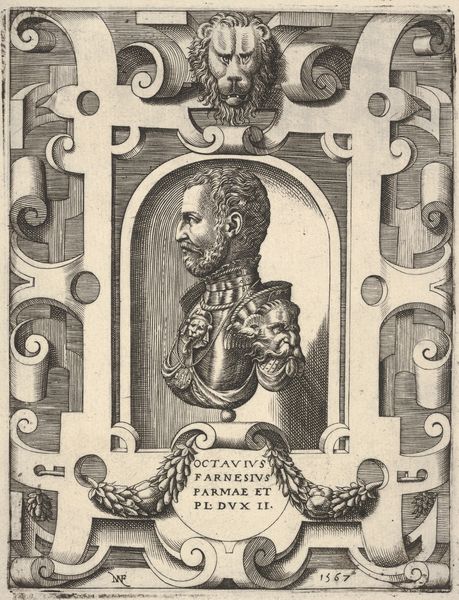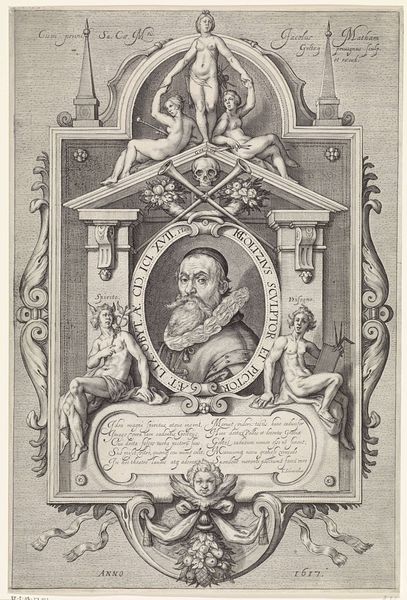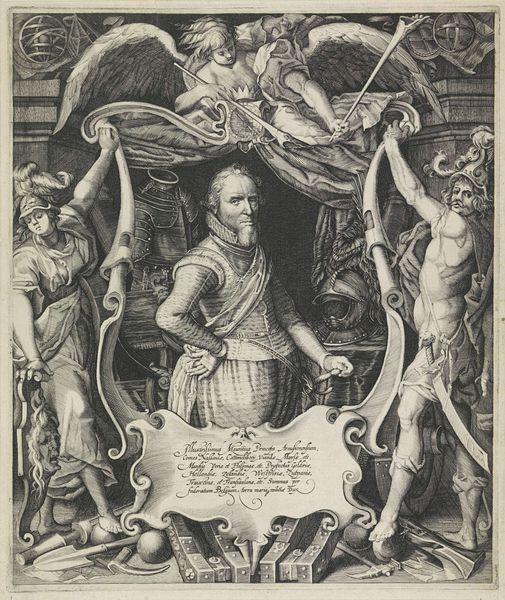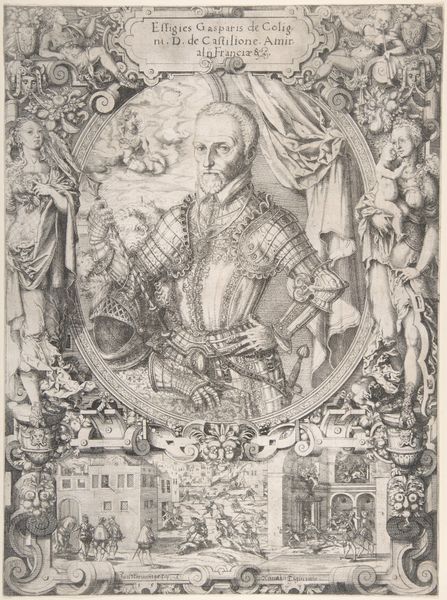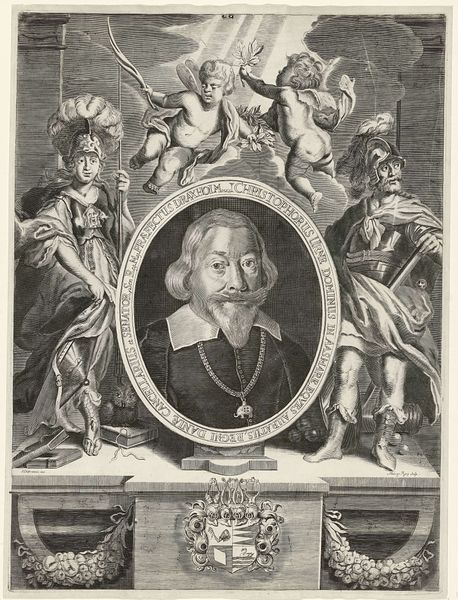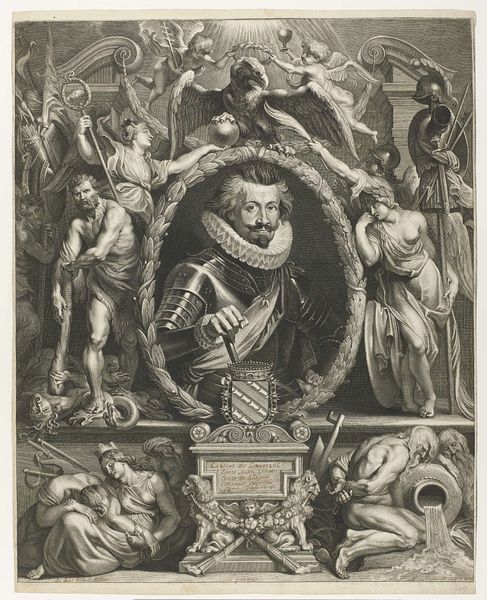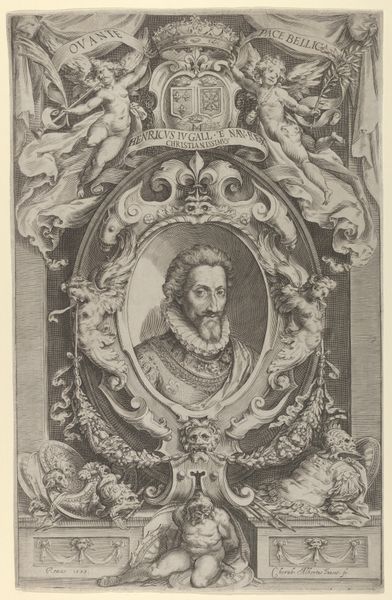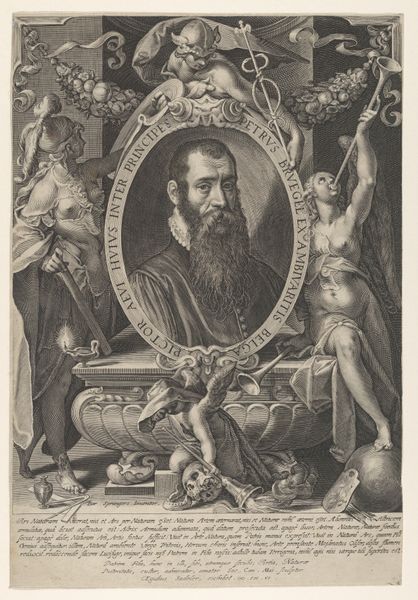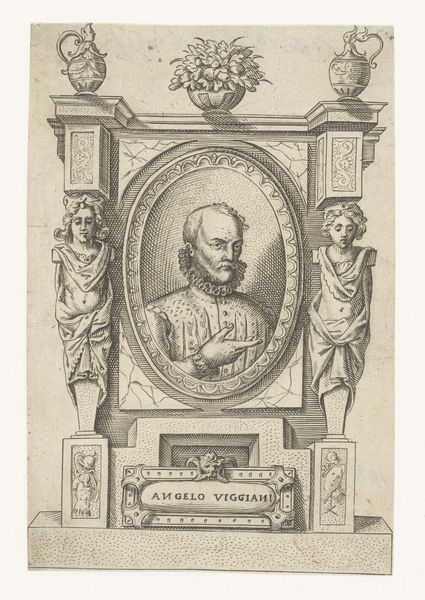
Allegorisch portret van Gaspard de Gusmán, graaf van Olivares en hertog van San Lucar 1616 - 1657
0:00
0:00
engraving
#
allegory
#
baroque
#
form
#
line
#
history-painting
#
engraving
#
realism
Dimensions: height 613 mm, width 441 mm
Copyright: Rijks Museum: Open Domain
Editor: Here we have an engraving titled "Allegorical Portrait of Gaspard de Guzmán, Count of Olivares and Duke of San Lucar" by Paulus Pontius, dating sometime between 1616 and 1657. It feels incredibly detailed; what formal aspects strike you as most significant? Curator: The composition is rigidly structured. The oval frame sharply defines the portrait within, setting it against a backdrop of symbolic elements. Note the contrast in textures: the smooth skin of the cherubs juxtaposed with the rough fur of the allegorical figures, the intricate drapery, and finally the crisp lines of the portrait itself. Consider how light and shadow are manipulated to create depth and direct the viewer's eye. Where do you feel the artist prioritizes visual interest? Editor: Definitely the face! All of the lines seem to lead there. It is so much sharper than other forms in the work. Is this contrast intended? Curator: Precisely. Pontius uses linear precision to accentuate the subject's presence within the symbolic arrangement. Consider also the strategic placement of textual elements. How do they interact with the visual components? Do the geometric forms have importance as well? Editor: Well, the inscription provides context and identifies the sitter, framing the image… And it gives it more order. Now that I think of it, how much would we "lose" if that section was removed, for example? Curator: It is a fundamental element, as without the inscription, we are left purely with the composition. Our interpretation might shift; perhaps focusing solely on the geometric arrangement and play of light and shadow within the print, inviting a purely formal reading. Would that change our experience of the work for better or for worse? Editor: That's fascinating to think about, seeing how line and composition function both with and without that knowledge. It gives me a lot to consider. Curator: Indeed, analyzing the formal elements opens new avenues for comprehending artistic intent and audience engagement, doesn't it?
Comments
No comments
Be the first to comment and join the conversation on the ultimate creative platform.
